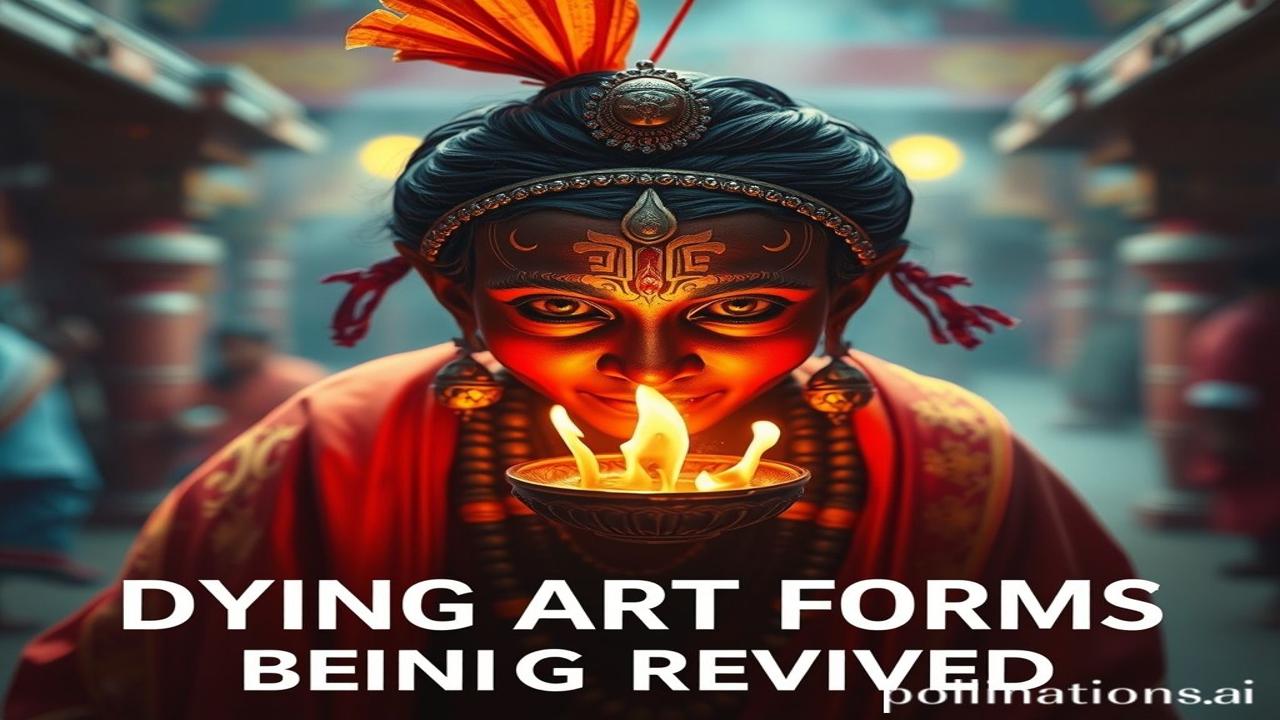Waqt Ki Dhool Mein Damakti Kala: Reviving Dying Art Forms
Kabhi socha hai, jab hamare purvajon ne pathron par pahli baar rang bhara tha, unke dil mein kya jazbaat the? Aaj, waqt ki dhool mein kuch aisi hi kahaniyan chhup jaati hain – kalakar, unki kala, unki mehanat, sab kuch… lekin, kya woh hamesha ke liye gum ho jaati hain? Nahi! Hindustan mein, kuch khaas log hain jo in gumshuda kiyon ko fir se zinda karne mein lage hain.
A Journey Through Time: The Legacy of Indian Art Forms
What exactly are we talking about? We’re talking about art forms that are teetering on the brink of extinction. These are not just “pretty pictures”; these are the very threads that weave together the tapestry of Indian history and culture. From the intricate handloom weaving of Paithani sarees in Maharashtra to the mesmerizing puppetry of Kathputli in Rajasthan, these arts were once the lifeblood of communities.
Think about it: Kathputli – wooden puppets dancing to the rhythm of drums, narrating tales of bravery, love, and loss. These weren’t just stories; they were lessons passed down through generations. Or consider the delicate artistry of Madhubani paintings from Bihar, where women used natural dyes and twigs to depict scenes from mythology and everyday life.
These art forms, dating back centuries – some even to the Indus Valley Civilization! – served as a vital form of communication, entertainment, and religious expression. They were integral to the social fabric of India. But the advent of modern technology, changing tastes, and economic pressures threatened to silence these voices forever.
Zameeni Sach: The People and Their Passion
Imagine Ma Rukmini, a weaver in a small village in Maharashtra. Her hands, weathered but skilled, move with practiced ease across the loom. The vibrant silks shimmer under the dim light of her hut. Generations of her family have woven Paithani sarees, each piece a masterpiece taking months to complete. She remembers her grandmother teaching her the intricate techniques, whispering stories of queens and goddesses adorned in these very sarees.
“Beti, yeh sirf kapda nahi hai,” her grandmother had said. “Yeh hamari sanskriti hai. Yeh hamari pehchaan hai.”
But Ma Rukmini’s heart aches. Her children want to move to the city, find easier jobs. Who will carry on this legacy? Will the secrets of the Paithani loom be lost forever?
Yeh ek aisi hi dukhi kahani hai. But happily, there are those who are determined to change this narrative. Artists, NGOs, and even the government are stepping in to provide support, training, and market access to these struggling artisans. They are helping to revive these dying art forms, giving them a new lease on life.
Dharohar Aur Pehchaan: Echoes in Modern India
How do these fading arts resonate with us today? They are a reminder of our rich cultural heritage, of our Bharatiyata. We see glimpses of them in contemporary art, in fashion, and even in our architecture.
Think about the intricate designs on textiles, inspired by traditional motifs. Or the use of natural dyes and eco-friendly materials, echoing the practices of our ancestors. These art forms are not just relics of the past; they are a source of inspiration for the future. They connect us to our roots, reminding us of who we are and where we come from.
Mazedar Tathya: Shocker Alert!
Log samajhte hain ki these art forms died a “natural death” due to lack of interest. But asli sach yeh hai ki many of these art forms suffered due to colonial policies that undermined local industries and suppressed indigenous traditions. The British encouraged the production of cheap, mass-produced goods, pushing traditional artisans into poverty and forcing them to abandon their craft.
Visuals and Emotions: Painting a Vivid Picture
Close your eyes for a moment. Imagine the aroma of sandalwood incense wafting through the air as you enter a traditional artisan’s workshop. The rhythmic clatter of the loom, the gentle hum of the spinning wheel, the vibrant colors of the dyes – these are the sounds and sights that once filled the villages of India. Feel the rough texture of handspun cotton, the smooth coolness of clay, the intricate patterns etched into wood. These are the tactile experiences that connect us to our past.
Antim Vichar: The Flame of Tradition
“Kala dilon ko jodti hai, aur sanskriti samaj ko.”
(Art connects hearts, and culture connects society.)
Let’s not let these flames flicker out. Let us support these artists, appreciate their work, and ensure that the legacy of Indian art lives on for generations to come. Let’s make sure that these stories, woven into the fabric of our nation, continue to be told.
